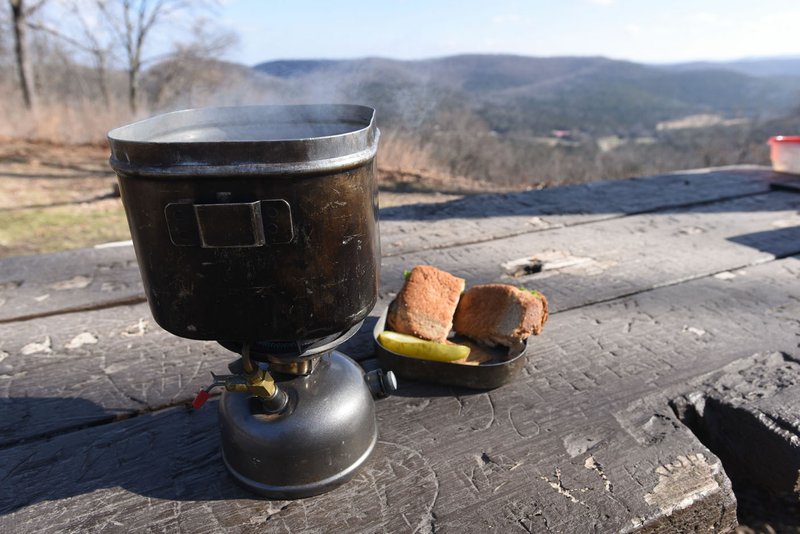Fine dining along the trail doesn't get much better than a steaming cup of soup on a chilly afternoon.
This trail happened to be a really wide one, one that most folks see by car. We were on the Sugar Camp Scenic Drive in the wilds of Mark Twain National Forest in Barry County, Mo. The eight-mile gravel road also makes a fine ride on a mountain bike.
We'll dutifully report on this scenic drive in NWA Outdoors next week. Today, it's all about the soup and the most dependable piece of camping gear I've ever owned, my trusty one-burner Coleman stove.
It's no exaggeration that I've been pumping the silver plunger and firing up this little round wonder for 30-plus years. The hiss and blue flame mean a hot mug of coffee on a frosty morning, prepared outside, but sipped in the cocoon of a sleeping bag inside a cozy tent.
On this Friday before Christmas, the stove provided hot vegetable soup on a 40-degree afternoon. We'd spent the morning biking the scenic drive and some of the two-track logging roads off the beaten path.
I'd parked the car at a little picnic area with two tables and a fabulous view. I set the Coleman one-burner on a table, pumped the plunger about 30 times and opened a valve. When I put match to burner -- poof -- a ring of instant fire. A few more pumps and the stove hissed like a rocket. In no time I slurped the first spoonful of hot delicious soup.
No need to bring a pot. The stove's aluminum carrying case doubles as a cook kit. It's black from years of use over campfire flames when we didn't need to light the stove.
I chose the one-burner long ago because it's smaller than the two-burner model. It's better for canoe camping or even backpacking, though one wouldn't call the Coleman a backpack stove. It weighs a couple pounds with fuel and its carrying case.
That didn't matter years ago when my friend, the late Matthew Ross, and I hiked the whole Ozark Highlands Trail in four trips. Our longest hike was 50 miles. The Coleman was with me every step.
On one trip we ran out of water. A creek where we planned to fill our bottles was bone dry. We made camp with nary a drop to quench our thirst or fix dinner.
The next morning we came across a deer camp. The hunters had Igloo coolers full of ice-cold water, like you'd see at a construction site. We slaked our thirst at the invitation of the hunters and filled our bottles.
Naturally, a mile later we came to a flowing stream. Rejoicing in our good fortune, we drank water until our bellies sloshed. I whipped out the one-burner and boiled up a heaping pot of Lipton chicken noodle soup. We found water the rest of the way.
When the ice storm hit in January 2009, the stove was a life savor with no electricity at the shack-ri-la for a week. That's nothing compared to others who were without power for two weeks or more. I fixed everything from coffee to beef stroganoff on the Coleman. Those memories all came back slurping hot soup at that picnic table on Sugar Camp Scenic Drive.
No telling how many times I've put match to metal and the stove hissed to life.
Flip Putthoff can be reached at fputthoff@nwadg.com or Twitter @NWAFlip
Sports on 01/02/2018